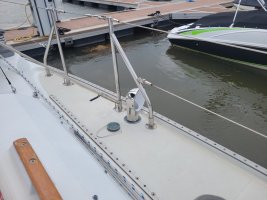I haven't had an alternator heat issue, it's just that they get pretty hot, especially if running at max output to recharge low batteries. Not an expert, but on the M25 I mounted the external regulator outside the engine box, so as to keep it cooler. Current boat has the regulator inside the box, and a mechanic felt that was not a problem.
Balmar says:
ALTERNATOR HEAT During operation, your alternator will become hot as a result of friction and the generation of inductive current. In some instances, particularly during extended periods of heavy load, alternator case temperature can exceed 200 degrees (F). If your system is operating with a Balmar multi-stage voltage regulator with optional Alternator Temperature Sensor (MC-TS-A), the regulator will automatically reduce field output if temperatures exceed set safe working limits. While this is an extremely effective protection for the alternator, it should not be depended upon as a part of normal operation. Correction of conditions causing overheating are strongly advised. Use extreme caution when handling the alternator or other engine components during or after use. Should your alternator become so hot that it emits a burning smell, or if there is indication of discoloration at the pulley or pulley shaft, shut off the alternator immediately and (once it becomes safe to inspect the alternator) check the tension of the drive belt. Under- and over-tensioned belts are the leading cause of overheating and alternator damage. See the Troubleshooting section, later in the manual, for alternator inspection guidelines










